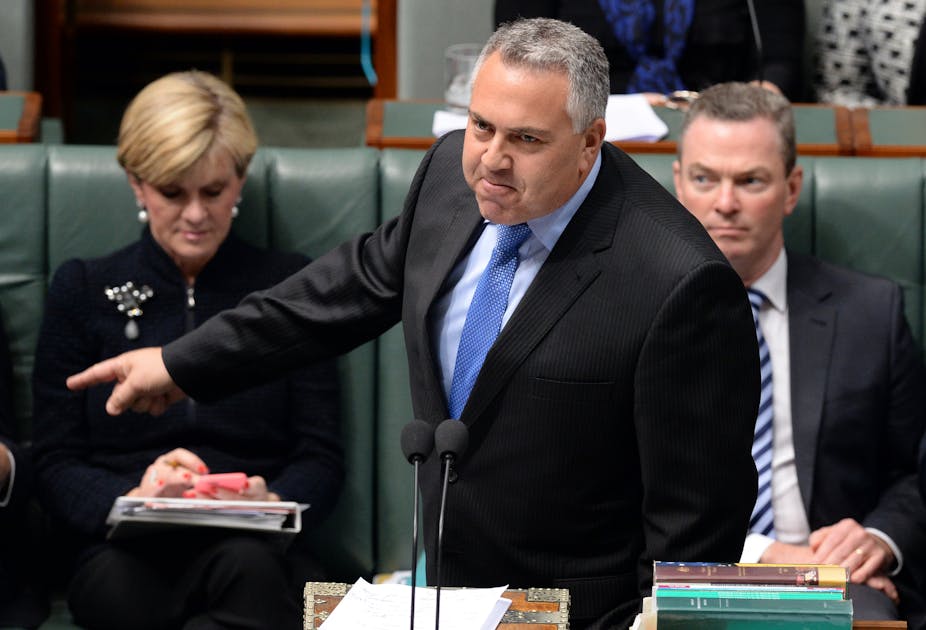The latest economic figures released by the Australian Bureau of Statistics (ABS) have fuelled the debate on the future of the Australian economy and prompted many to ask: “Will Australia go into a recession?”
This question is legitimate, but off the mark. In fact, the data tells us that we should not be worried about going into recession.
What we should worry about instead is how to get out of the recession. Because, like it or not, the recession is already here and the sooner we acknowledge the problem, the sooner we can start the recovery.
So, what does the data say?
According to ABS, trend Gross Domestic Product (GDP) growth in Australia in the second quarter of 2015 was 0.5%. This was only marginally below the rate observed in the first quarter of the year (0.6%). The implied annual growth rate of GDP is therefore around 2%.
While considerably below the long-term average of 3.25% a year, trend growth is still positive, which means that Australia is not technically in a recession.
Economists technically define a recession as a period of at least two consecutive quarters of negative GDP growth. This occurs rarely in an advanced economy like Australia.
The last time Australia was technically in recession was 24 years ago, when trend growth turned negative in the third quarter of 1990 and did not go back to positive until quarter four of 1991.
Before then, trend growth was negative for five quarters between 1982 and 1983, for two quarters in the middle of 1974, and for four quarters between 1960 and 1961.
However, while not being technically in a recession, Australia today shows most of the symptoms of recession.
Reload: what does the data say?
First of all, trend GDP is by construction smoothed. However, recessions (and expansions) are cyclical phenomena that are better represented by seasonally adjusted GDP.
In the second quarter of 2015, seasonally adjusted GDP in Australia grew by a mere 0.2%, sharply down from the first quarter when it grew by 0.9%. That is, seasonally adjusted data suggests that the country is much closer to the beginning of a technical recession.
Second, seasonally adjusted Gross Domestic Income (GDI) showed negative growth of -0.4%. This is particularly worrying because GDI is statistically more reliable than GDP as a predictor of the cyclical fluctuations of the economy.
Third, and probably even more importantly, indicators of an individual’s welfare are taking a turn for the worse. The second quarter of the year saw negative growth in GDP per capita (-0.2%) and net national disposable income per capita (-1.2%).
These negative income dynamics add to persistently weak labour market performance.
The ABS labour force survey shows that seasonally adjusted unemployment reached 795,500 units in July 2015. This is the highest level since November 1994 and approximately 125,000 units higher than at the peak of the global financial crisis (June 2009). The corresponding unemployment rate was 6.3%.
In the same month of July 2015, youth unemployment increased to 13.8%. This was the first monthly increase since the beginning of the year.
Perhaps this is not technically a recession, but certainly it looks, smells and feels a lot like one.
Intervention needed
The government, however, seems to be in denial.
Finance Minister Mathias Cormann is reportedly “very optimistic about the outlook moving forward”. Treasurer Joe Hockey recently said that “the Australian economy is showing a deep resilience that people in Canada and elsewhere would die for.”
Unfortunately, the fact that Canada is in a technical recession and other resource-intensive countries are suffering from falls in commodity prices does not make the situation of Australia any better.
Conversely, the business sector seems to have understood the reality of the situation. This is evident, for instance, in the declining levels of business confidence and conditions reported by the NAB Monthly Business Survey of July 2015.
The good thing about recessions is that, generally, they end. The bad thing, instead, is that their effects are felt proportionally more by households at the bottom end of income distribution.
Another bad thing is that the consequences of a recession (in terms of unemployment and reduced welfare, for instance) tend to outlive the recession itself.
For all these reasons, some form of intervention would be desirable; but how?
In Australia’s case, the empirical evidence clearly indicates that fiscal stimulus works: for each dollar spent by the government, GDP increases by more than one dollar.
In fact, already now, what has prevented the country from recording negative GDP growth is good old Keynesian spending.
Government final consumption grew by 2.2% in the second quarter of the year and 4% since the beginning of the year. Public gross fixed capital formation increased by 4% in the second quarter.
Without this extra public spending Australia would probably have experienced its first quarter of negative growth.
Certainly, Australia also has structural problems that condition its longer-term performance and that a fiscal stimulus will not solve. But the stimulus will improve the short-term outlook, restore confidence and create favourable socioeconomic conditions to undertake structural reforms.
To get there, however, an initial step is required: the government must get past its denial of the problem. Let’s hope that this happens sooner rather than later.

